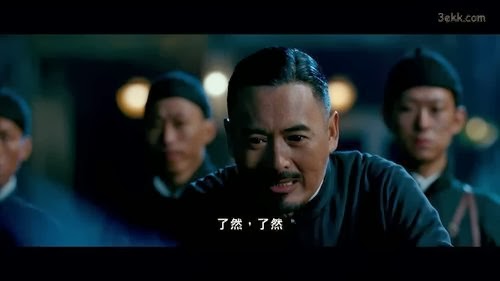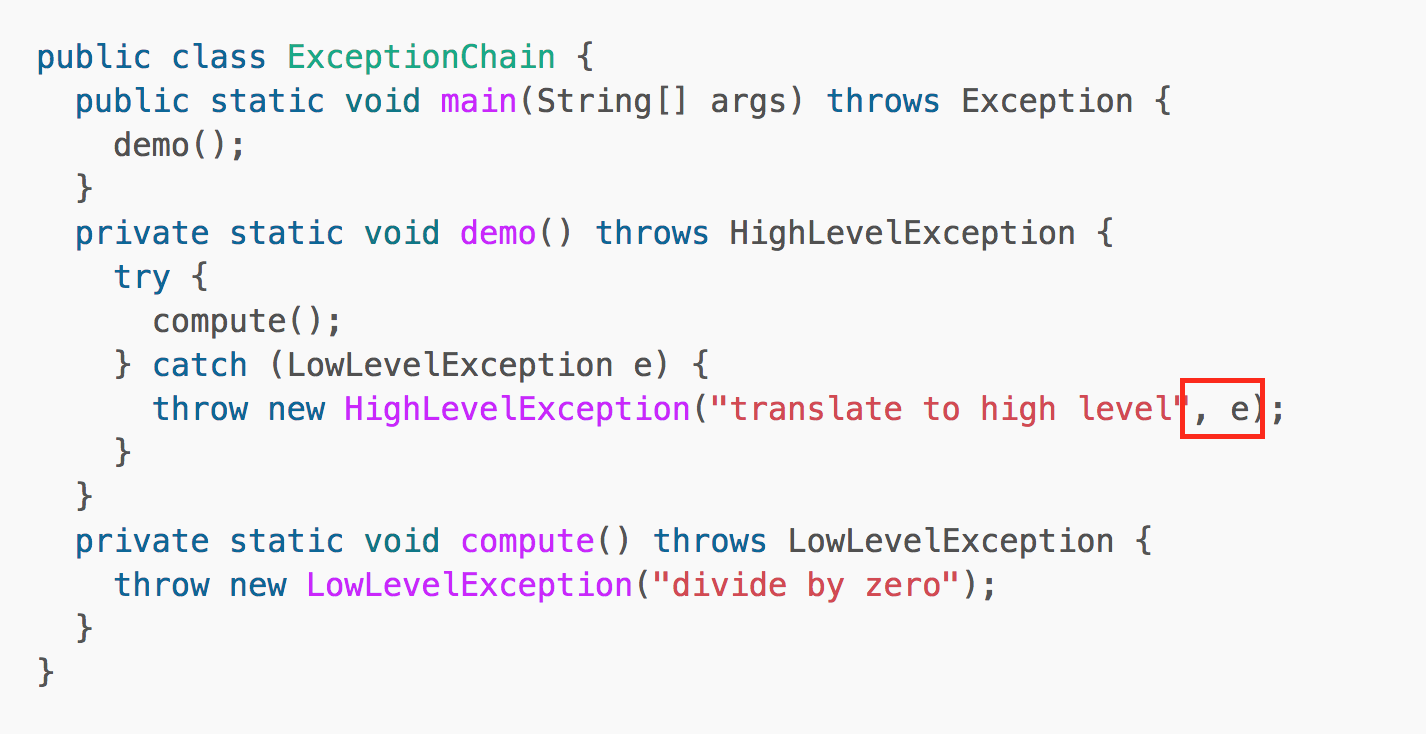Effective Java Item73 - 拋出與抽象相對應的異常
February 25, 2018這篇是Effective Java - Throw exceptions appropriate to the abstraction章節的讀書筆記 本篇的程式碼來自於原書內容
Item73: 拋出與抽象相對應的異常
如果方法拋出的異常 和這個方法執行的任務沒有太大的關係 這種情形會讓人困惑 這很容易發生在 當異常是由好幾層之後的方法丟出來的情況下 最上層的可能根本看不懂
比如A call B, B call C 但在C的地方有異常噴出 但在A那邊丟給client的時候client根本看不懂 這個異常是怎麼回事
為了避免這個問題 每一個方法都應該捕捉低一階的異常 然後轉化為這一層看得懂的異常 再丟出去 這個方法就做異常轉譯(Exception translation)
//Exception translation
try {
//call lower level function
} catch (LowerLevelException e){
throw new HigherLevelException()
}來個現實生活的例子
/**
* Returns the element at the specified position in this list.
* @throws IndexOutOfBoundsException if the index is out of range
* ({@code index < 0 || index >= size()}).
*/
public E get(int index) {
ListIterator<E> i = listIterator(index);
try {
return i.next();
} catch(NoSuchElementException e) {
throw new IndexOutOfBoundsException("Index: " + index);
}
}上面的例子 client就不會莫名其妙接收到一個NoSuchElementException 而是我們有好好的轉譯過的IndexOutOfBoundsException
異常鍊
有些時候我們並不想像上面的例子一樣 直接把下層的異常消化掉 我們希望把下層的異常一路往上丟 可是直接不加修飾的丟 又會發生之前的client看不懂的情況
這時候可以用異常鍊Exception Chaining 讓高層的異常可以訪問低層的異常
看到這一part 我完全看不懂effective java在講什麼 經過多番的研究 終於在Baeldung看到了比較完整的解釋
端上例子之前 先來看一下什麼是initCause跟getCause
public class ExceptionDemo {
public static void main(String[] args) {
try {
func1();
} catch(IOException ioe) {
System.out.println("Caught : " + ioe);
System.out.println("Actual cause: "+ ioe.getCause());
}
}
static void func1() throws IOException {
IOException ioe = new IOException();
ioe.initCause(new ArithmeticException("divide by zero"));
throw ioe;
}
}很好 func1拋出了一個IOException 但是在拋出之前 我可以再多給一點info 告訴別人說 我的initial Cause其實是ArithmeticException 只是被我包裝過後 才丟出IOException的
跑完Output是這樣

這樣即使上層的人看到IOException 也不會霧煞煞 因為他可以getCause看到到底原因是什麼 甚至可以一路getCause下去
有個基本概念之後呢 我們來看一下Exception的constructor
public Exception(String message) {super(message);}
public Exception(String message, Throwable cause) {super(message, cause);}
public Exception(Throwable cause) {super(cause);}
完全瞭然 你要自定義Exception的時候 可以決定要用哪一個constructor 在等一下要端上的例子中 我們會比較chained exception跟unchained exception的差別
所以HighLevelException我們overwrite兩個constructor
class HighLevelException extends Exception {
public HighLevelException(String message, Throwable cause) {
super(message, cause);
}
public HighLevelException(String message) {
super(message);
}
}
class LowLevelException extends Exception {
public LowLevelException(String message) {
super(message);
}
}上主菜
public class ExceptionChain {
public static void main(String[] args) throws Exception {
demo();
}
private static void demo() throws HighLevelException {
try {
compute();
} catch (LowLevelException e) {
throw new HighLevelException("translate to high level");
}
}
private static void compute() throws LowLevelException {
throw new LowLevelException("divide by zero");
}
}這個是unchained的例子 在demo這個方法裡面自己消化了LowLevelException 轉化成HighLevelException
Output如下

現在來看看chained exception

跟剛剛唯一的差別就是我們創建HighLevelException時用了不同的constructor
Output如下

這就是effective java想表達的概念
總結
如果有辦法避免來自低層的異常 就在呼叫低層方法之前先確認要給進去的參數
如果不能處理或是避免來自低層的異常 就用異常轉譯
但如果低層的異常可以給高層很多info 那就可以用異常鍊 把異常傳到上層 這不但讓你成功包裝了下層的異常 還讓接受到異常的人可以捕獲到低層的異常進而分析